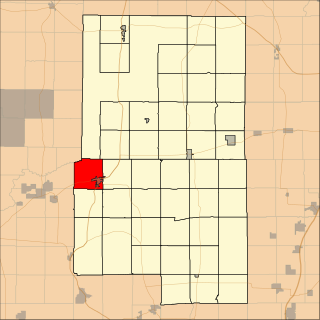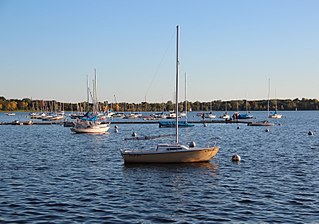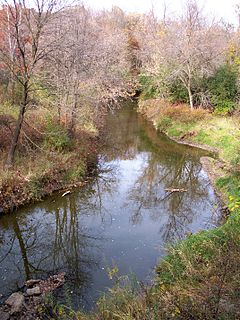
Waseca County is a county in the U.S. state of Minnesota. As of the 2010 United States Census, the population was 19,136. Its county seat is Waseca.

Wadena County is a county in the East Central part of the U.S. state of Minnesota. As of the 2010 United States Census, the population was 13,843. Its county seat is Wadena. It is the poorest county in Minnesota, and one of the poorest in the United States.

Blue Earth County is a county in the State of Minnesota. As of the 2010 United States Census, the population was 64,013. Its county seat is Mankato. The county is named for the Blue Earth River and for the deposits of blue-green clay once evident along the banks of the Blue Earth River.

Lily Lake is a village in Kane County, Illinois, United States. The town is 15 miles (24 km) southwest of Elgin and 45 miles (72 km) west of Chicago. The village is part of the Chicago metro area. It was incorporated as a village on November 6, 1990. The population was 993 at the 2010 census, up from 825 in 2000.

Aitkin Township is a township in Aitkin County, Minnesota, United States. The population was 856 as of the 2010 census.

Glen Township is a township in Aitkin County, Minnesota, United States. The population was 450 as of the 2010 census.

Judson Township is a township in Blue Earth County, Minnesota, United States. The population was 591 as of the 2000 census.

Barclay Township is a township in Cass County, Minnesota, United States. As of the 2000 census, its population was 516. Barclay Township was named for an early settler.

Blind Lake Township is a township in Cass County, Minnesota, United States. The population was 88 as of the 2000 census.

Deerfield Township is a township in Cass County, Minnesota, United States. The population was 154 as of the 2000 census. Deerfield Township was named for the large population of deer within its borders.

Lima Township is a township in Cass County, Minnesota, United States. The population was 111 as of the 2000 census. Lima Township was probably named after Lima, Ohio.

Powers Township is a township in Cass County, Minnesota, United States. The population was 918 at the 2000 census. Powers Township was named for Gorham Powers, a Minnesota politician who owned land there.

Remer Township is a township in Cass County, Minnesota, United States. The population was 183 as of the 2000 census. Remer Township was named for two brothers, E. N. and William P. Remer.

Shingobee Township is a township in Cass County, Minnesota, United States. The population was 1,745 as of the 2000 census. This township took its name from the Shingobee River.

Bde Maka Ska is the largest lake in Minneapolis, Minnesota, United States, and part of the city's Chain of Lakes. Surrounded by city park land and circled by bike and walking trails, it is popular for many outdoor activities. The lake has an area of 401 acres (1.62 km2) and a maximum depth of 87 feet (27 m).

The Bois de Sioux River drains Lake Traverse, the southernmost body of water in the Hudson Bay watershed of North America. It is a tributary of the Red River of the North and defines part of the western border of the U.S. state of Minnesota, and the eastern borders of North Dakota and South Dakota. It is about 41 miles (66 km) in length.

Rice Creek is a tributary of the Mississippi River in the northern suburbs of the Minneapolis–St. Paul metropolitan area of Minnesota in the United States. It is approximately 28 miles (45 km) long and drains a watershed of 201 square miles (520 km2).
Bouder Lake is a 136-acre lake in Cook County, Minnesota which is tributary to the Poplar River. Bouder Lake reaches a maximum depth of 17 feet. Bouder is accessible through a navigable channel leading into Crescent Lake. A fisheries survey turned up populations of walleye, muskellunge, smallmouth bass, yellow perch, and white suckers. An aquatic plants survey found the lake to be home to several species of water marigolds, pondweed, bladderwort, water lily, burreed, sedges, and cattails.

Lily Lake is a lake in Blue Earth County, Minnesota, in the United States.
Lily Lake is a lake in Washington County, in the U.S. state of Minnesota.









